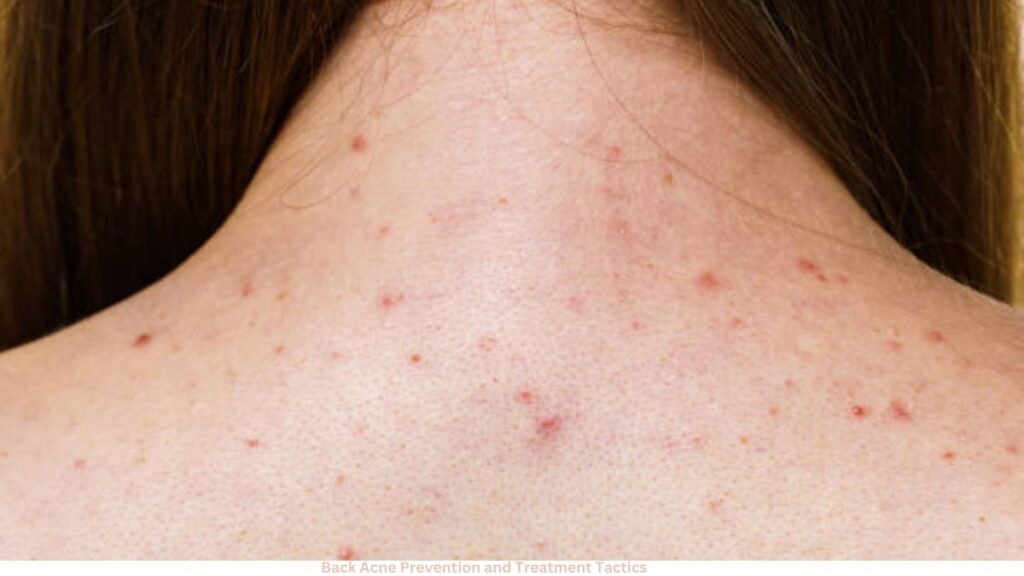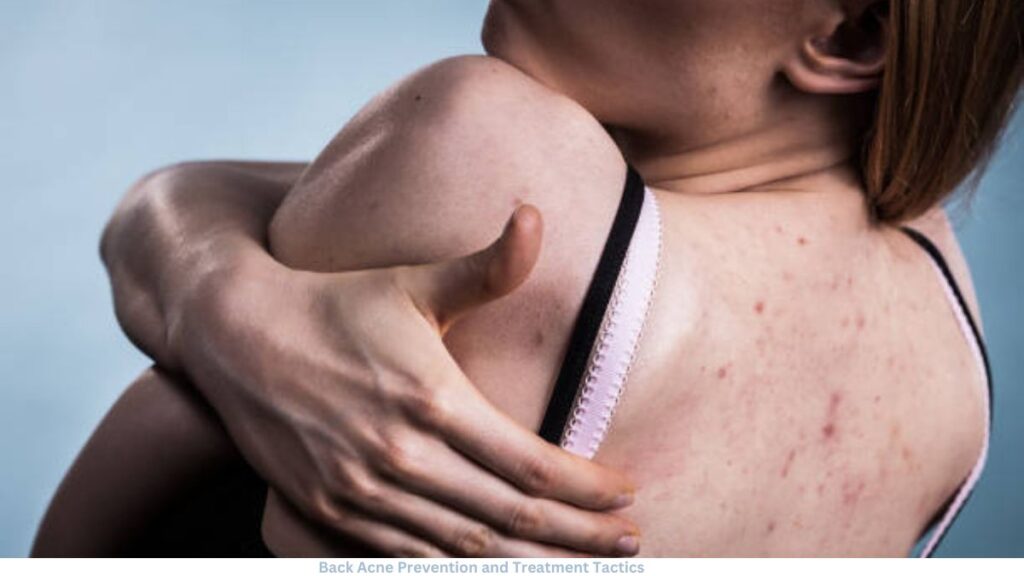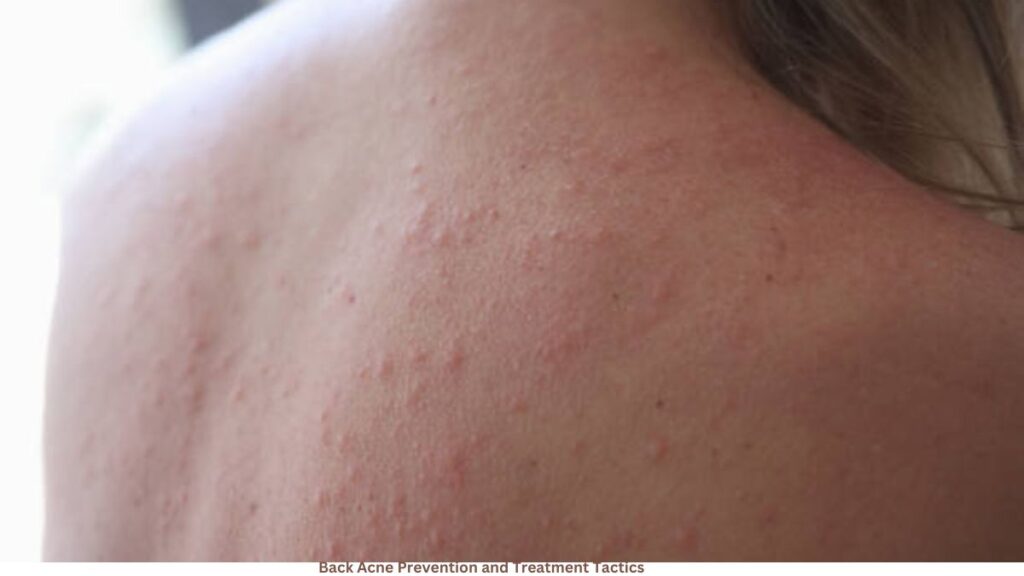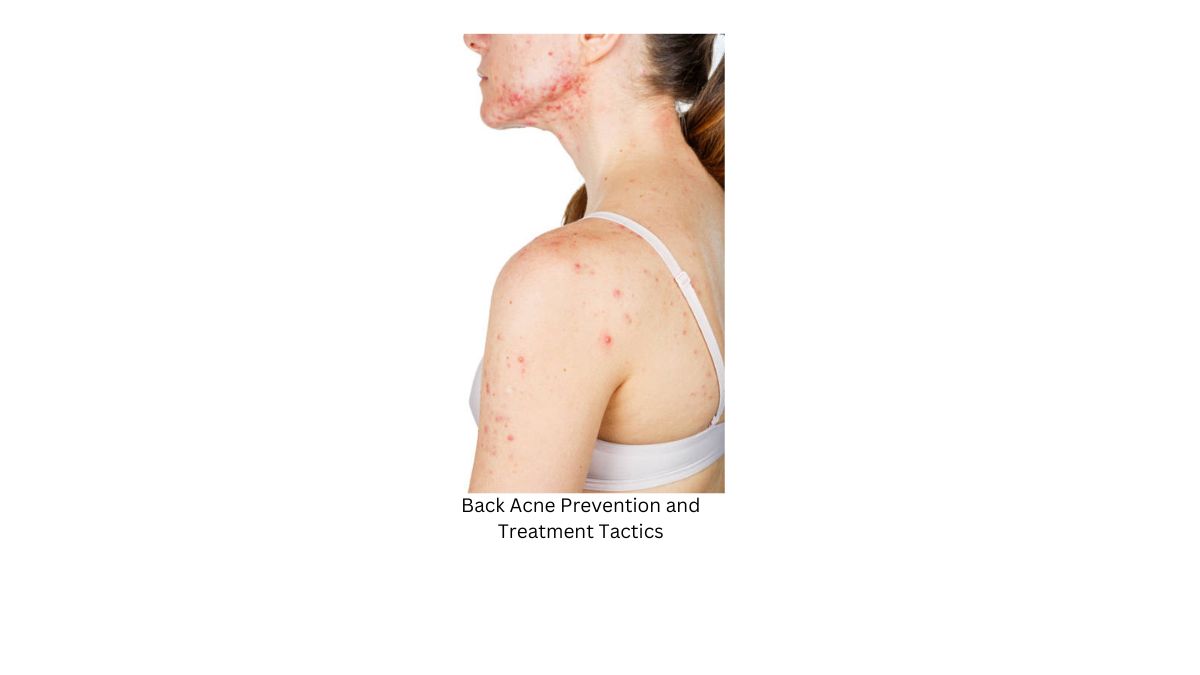Introduction:-
Clearing the Confusion: Back Acne Prevention and Treatment Tactics

In the battle against back acne, it’s easy to feel overwhelmed by the myriad of advice and products available. However, understanding the right prevention and treatment tactics can make all the difference in achieving clear, radiant skin. In this comprehensive guide, we’ll delve into effective strategies to combat back acne and clear up any confusion you may have.
What is Back Acne Prevention and Treatment Tactics?
Understanding Back Acne: Before diving into prevention and treatment tactics, it’s essential to grasp what causes back acne. Back acne, also known as bacne, occurs when hair follicles become clogged with excess oil, dead skin cells, and bacteria. Factors such as hormonal fluctuations, genetics, sweating, and certain medications can contribute to its development.
Prevention Tactics:
- Maintain Proper Hygiene: Regularly showering and cleansing your back with a gentle, non-comedogenic cleanser can help prevent the buildup of oil and bacteria.
- Wear Breathable Fabrics: Opt for loose-fitting clothing made from breathable fabrics like cotton to minimize friction and reduce sweat buildup, which can exacerbate back acne.
- Avoid Harsh Products: Steer clear of harsh skincare products and detergents that can strip the skin of its natural oils and exacerbate acne. Instead, opt for gentle, fragrance-free options.
- Practice Good Post-Workout Hygiene: After sweating, promptly shower and change into clean clothing to prevent sweat and bacteria from lingering on your skin.
- Limit Sun Exposure: While sunlight may temporarily improve acne, excessive sun exposure can lead to skin damage and worsen acne in the long run. Use a non-comedogenic sunscreen to protect your back when exposed to the sun.
Treatment Tactics:
- Topical Treatments: Look for over-the-counter products containing ingredients such as salicylic acid, benzoyl peroxide, or retinoids, which can help unclog pores and reduce inflammation associated with back acne.
- Professional Treatments: Consider seeking professional treatments like chemical peels, microdermabrasion, or laser therapy from a dermatologist to target stubborn back acne and minimize scarring.
- Prescription Medications: In severe cases, your dermatologist may prescribe oral medications such as antibiotics, oral contraceptives, or isotretinoin to effectively manage back acne.
- Lifestyle Modifications: Adopting a healthy lifestyle can also contribute to clearer skin. Incorporate stress-reducing activities, maintain a balanced diet, stay hydrated, and get an adequate amount of sleep to support overall skin health.
What causes back acne?
Back acne, also known as bacne, is primarily caused by the same factors that contribute to acne on the face and other parts of the body. These factors include:

- Excess Oil Production: The skin on the back, like the face, has numerous sebaceous glands that produce oil (sebum) to keep the skin moisturized. Excessive production of oil can lead to clogged pores and acne breakouts.
- Dead Skin Cells: Dead skin cells can accumulate on the surface of the skin and mix with excess oil, leading to the formation of clogged pores. When pores become clogged, bacteria multiply within them, leading to inflammation and acne.
- Bacteria: Propionibacterium acnes (P. acnes) is a type of bacteria that naturally resides on the skin. When pores become clogged, P. acnes can multiply rapidly, leading to inflammation and the formation of acne lesions.
- Hormonal Changes: Hormonal fluctuations, particularly during puberty, menstruation, pregnancy, and menopause, can stimulate the sebaceous glands to produce more oil. This excess oil production can contribute to the development of acne, including back acne.
- Genetics: Genetic factors can play a role in predisposing individuals to acne. If your parents or other family members have a history of acne, you may be more likely to develop it yourself, including back acne.
- Friction and Pressure: Tight clothing, backpacks, and sports equipment can create friction and pressure on the back, leading to irritation and inflammation of the hair follicles. This can exacerbate acne or contribute to its development, particularly in areas where there is repeated friction.
- Sweat: Sweat can mix with oils, dead skin cells, and bacteria on the skin’s surface, leading to pore blockage and acne formation. Additionally, sweat can create a humid environment that is conducive to bacterial growth.
- Diet: While the direct link between diet and acne is still debated, some studies suggest that certain dietary factors, such as high glycemic index foods and dairy products, may exacerbate acne in some individuals.
It’s important to note that the exact cause of acne can vary from person to person, and multiple factors may contribute to its development. Additionally, individual responses to acne treatments may vary, so it may require some trial and error to find the most effective approach for managing back acne.
How do you treat back acne naturally?
Treating back acne naturally involves adopting a holistic approach to skincare and lifestyle habits that can help reduce inflammation, unclog pores, and promote overall skin health. Here are some natural remedies and strategies to consider:

- Regular Cleansing: Cleanse your back daily with a gentle, non-comedogenic cleanser to remove excess oil, sweat, and impurities that can contribute to acne formation.
- Exfoliation: Incorporate exfoliation into your skincare routine to remove dead skin cells and unclog pores. Opt for a gentle exfoliating scrub or a body brush to avoid irritating the skin.
- Tea Tree Oil: Tea tree oil has antimicrobial properties that can help kill acne-causing bacteria and reduce inflammation. Dilute tea tree oil with a carrier oil like coconut oil and apply it to the affected areas of your back.
- Apple Cider Vinegar: Apple cider vinegar contains acetic acid, which can help balance the skin’s pH levels and reduce inflammation. Mix equal parts apple cider vinegar and water, and apply the solution to your back using a cotton ball. Rinse off after a few minutes.
- Aloe Vera: Aloe vera has soothing and anti-inflammatory properties that can help calm irritated skin and reduce redness associated with acne. Apply pure aloe vera gel directly to your back or look for skincare products containing aloe vera as an ingredient.
- Honey and Cinnamon Mask: Mix honey and cinnamon to create a paste, then apply it to your back as a mask. Honey has antibacterial properties, while cinnamon can help improve circulation and reduce inflammation.
- Oatmeal Bath: Taking an oatmeal bath can help soothe inflamed skin and reduce itching associated with back acne. Grind oats into a fine powder and add it to your bathwater, then soak for 15-20 minutes.
- Dietary Adjustments: Incorporate more fruits, vegetables, and whole grains into your diet while reducing your intake of processed foods, sugar, and dairy products. Some studies suggest that certain dietary factors can influence acne severity.
- Stay Hydrated: Drink plenty of water throughout the day to keep your skin hydrated and promote detoxification. Hydration is essential for maintaining healthy skin and preventing acne breakouts.
- Stress Management: Practice stress-reducing activities such as yoga, meditation, or deep breathing exercises. Chronic stress can contribute to hormonal imbalances that may exacerbate acne.
It’s essential to note that natural remedies may not work for everyone, and individual results may vary. If you have severe or persistent back acne, consult with a dermatologist for personalized treatment recommendations.
Conclusion:
Clearing the confusion surrounding back acne prevention and treatment involves implementing a multifaceted approach tailored to your specific needs. By understanding the underlying causes of back acne and adopting effective prevention and treatment tactics, you can achieve clearer, smoother skin and regain your confidence. Remember to be patient and consistent in your skincare routine, and don’t hesitate to consult with a dermatologist for personalized advice and guidance.






